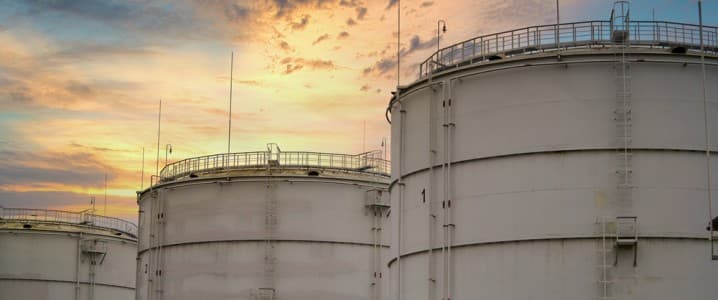Business
China Expands Oil Storage Capacity with 11 New Sites

China is set to enhance its oil storage capabilities by constructing 11 new storage sites over the next two years. This initiative aims to build up reserves while crude oil prices remain low. According to a report from Reuters, these new facilities will collectively hold approximately 169 million barrels of crude oil, which is equivalent to about two weeks’ worth of China’s crude oil imports.
The current expansion follows previous storage capacity increases that amounted to between 180 million and 190 million barrels from 2020 to 2024, as per data from Vortexa and Kpler. China has been purchasing more crude oil than it can currently consume or export, capitalizing on stable prices and discounts on sanctioned crude from Russia and Iran.
The Chinese government does not publicly disclose its inventory levels; however, industry analysts estimate these figures based on import data and refinery activity. For instance, in August, China was reportedly stockpiling crude at a rate of 1 million barrels daily. The average stockpiling rate for the year has been around 990,000 barrels each day. Projections indicate that this rate may decrease to roughly 500,000 barrels daily over the next year, according to Goldman Sachs analyst Daan Struyven.
Market Outlook and Concerns
Despite China’s increased inventory purchases, many analysts express concerns about an impending oversupply in the oil market. Predictions suggest that an oversupply could manifest either by the end of this year or in 2026, potentially driving prices lower. Some analysts foresee Brent crude prices falling to around $50 per barrel, with others suggesting it may dip even further.
Goldman Sachs estimates a supply surplus of approximately 1.9 million barrels daily. The International Energy Agency has warned of a record surplus that could reach as high as 3 million barrels daily. Key factors contributing to this outlook include strong production from the U.S. shale sector, albeit at a slower growth pace, sluggish demand growth, and increases in output from OPEC+, which, despite efforts, are falling short of production targets.
As China continues to build its oil reserves, the global market remains on alert for shifts in supply and demand dynamics that could influence pricing and availability in the coming months.
-

 World5 months ago
World5 months agoSBI Announces QIP Floor Price at ₹811.05 Per Share
-

 Lifestyle5 months ago
Lifestyle5 months agoCept Unveils ₹3.1 Crore Urban Mobility Plan for Sustainable Growth
-

 Science4 months ago
Science4 months agoNew Blood Group Discovered in South Indian Woman at Rotary Centre
-

 World5 months ago
World5 months agoTorrential Rains Cause Flash Flooding in New York and New Jersey
-

 Top Stories5 months ago
Top Stories5 months agoKonkani Cultural Organisation to Host Pearl Jubilee in Abu Dhabi
-

 Sports4 months ago
Sports4 months agoBroad Advocates for Bowling Change Ahead of Final Test Against India
-

 Science5 months ago
Science5 months agoNothing Headphone 1 Review: A Bold Contender in Audio Design
-

 Top Stories5 months ago
Top Stories5 months agoAir India Crash Investigation Highlights Boeing Fuel Switch Concerns
-

 Business5 months ago
Business5 months agoIndian Stock Market Rebounds: Sensex and Nifty Rise After Four-Day Decline
-

 Sports4 months ago
Sports4 months agoCristian Totti Retires at 19: Pressure of Fame Takes Toll
-

 Politics5 months ago
Politics5 months agoAbandoned Doberman Finds New Home After Journey to Prague
-

 Top Stories5 months ago
Top Stories5 months agoPatna Bank Manager Abhishek Varun Found Dead in Well









